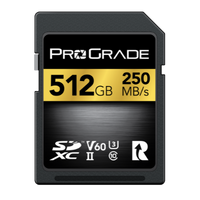Finding your unique style and voice as a photographer is like discovering you have a secret superpower. Suddenly, your images stand out. They’re gripping, worthy of engagement, and sparking conversations.
The unique style of your images and your voice as a photographer truly are the holy grail of avoiding conformity. It’s what separates phenomenal photographers from just great ones.
But how do you find it? How do you discover your artistic voice – genuine to yourself and your creativity?
Your authentic voice starts forming through intentional practice and continues developing through experimentation. It is a process. A journey. Not something you’ll accomplish overnight.
At the same time, it’s also not something reserved only for the chosen few – for the super-talented shutterbugs. We all have unique voices. So if you’re conscious about it – you too will eventually discover it!
This article guides you through that discovery process and lays out everything it takes to find your voice and artistic style as a photographer.
What exactly is your unique voice?
Your unique voice is how you approach capturing images. It is everything from how you compose shots, the subjects you choose, the techniques you use, and even how you process and edit your photographs. Your voice reflects in the images you create and distinguishes you from other photographers.
Finding your authentic voice may seem overwhelming at first, but it eventually boils down to 3 key components: skill, medium, and subject.
Start by Building Skills
Skill is the foundation of your creative voice. Without skill, you are not in complete control of your photographs.
Your unique style requires you to shoot images with desired composition, light, and exposure. That takes technical knowledge and expertise. You need to know your craft down to a tee.
It’s not just about technical excellence. A broad set of skills makes it much easier to communicate your vision and emotions through your photos. Think of your skillset as your vocabulary. The more comprehensive it is, the more versatile and colorful you can be when delivering your message. Skills also help you develop an artistic eye, essential for shooting richer and more elaborate images.
Lisa Congdon, a Portland-based fine artist, said in an interview with “Creative Boom” that building skill takes ten steps:
- Begin;
- Practice;
- Keep showing up;
- Practice some more;
- Stretch yourself,
- Practice;
- Practice;
- Note your improvements;
- Practice more;
- Repeat.
Don’t know where to begin? Consider taking one of these online photography classes.
Choose Your Medium Carefully
Medium is a term that refers to a way or means of communicating or expressing something, such as a language or a form of technology. In photography, the medium is what you use to give form to your creative voice.
Photography mediums range from all-manual cameras that capture light onto black-and-white film to high-end digital cameras with intelligent automatic settings. Each medium expresses differently what you are trying to communicate, making it an essential part of your voice.
Choose a medium you like working with and that helps convey your message most effectively.
Let Your Subjects Choose You
With every click of a shutter, you can create something that stands out from the crowd and truly speaks to your creative vision. People, landscapes, narrative scenes, arrangements of objects, and abstractions are all obvious subject matters. But it’s just one side of the coin. It’s also about personal experiences. It’s about what you find fascinating or dull, attractive or disgusting.
Your subject eventually becomes the defining aspect of your voice. The key here is to stay true to yourself. Preaching a message that you yourself don’t believe in doesn’t get you very far. Nor does attempting to say what you think others may want to hear.
We all want to be accepted and loved. It’s human nature. So when we see a photograph touching us deeply, we naturally gravitate toward achieving the same result for our audience with our own photos.
We see a stunning landscape photo with bold colors that stand out, and the next moment, we’re neck deep into identifying a simple color palette and reading blog posts about how to capture colors that are pleasing to the eye.
It’s an excellent way to learn a new technique, but it leads you to a dead end when it comes to being creative. Be inspired by others, but don’t copy.
Self-consciousness can prevent you from being who you are, expressing your true feelings, and conveying that sincere message through your images. By letting go, you’ll set yourself free. It will put you in a state where you’re most likely to produce your best work.
When you let go and allow your subjects to come to you, the choice is no more flat and superficial. It’s subconsciously influenced by your sense of right and wrong, your sense of freedom or lack of it, the culture you grew up in, your ethnicity, education, and even your beliefs.
Listen to your heart, and soon you’ll notice that your subjects are starting to reflect more and more your unique perspective. They tell profound stories with your life experience, identity, and values embedded deep in them.
5 Things You Can Do to Discover Your Authentic Voice
1. Tell Your Story
It’s one thing to tell a story with your images and whole another thing to tell your story. Telling your story allows you to set free what’s deep inside, and this naturally helps bring out your authentic voice. So it’s a great way to get the self-discovery process started. On top of that, telling your story helps build a strong connection with your audience.
Your most remarkable triumphs, deepest regrets, learned lessons, and fondest memories, as well as love, sorrow, and disappointments, all hide a powerful story that only you can tell.
2. Play With Creative Styles
Everything from aspect ratio, framing, and color palette to rhythm, movement, and use of negative space constitutes your style. Play with each element to see what resonates the most, and then make it your own. Once there, start repeating these elements throughout your photographs.
You can have more than one style, but it’s critical that you use the elements that define you within each of your creative styles.
3. Be Consistent
Consistency is the manifestation of your voice. Without it, your images quickly lose character and become a collection of stylistic elements. When you find your voice, use it consistently.
You may feel a need to bring something new to the table or, at times, even get bored and uninspired. In that case, it is essential to understand why. Jumping from one voice to another oftentimes is not the best solution.
4. Stay True to Yourself
Don’t get lured in by the next hot trend or ever-changing market demands. You’ll inevitably lose your voice when you keep jumping from one fad train to another.
5. Keep Going
The process of finding your authentic voice is full of setbacks and frustrations. Acknowledge that from the get-go. There will be periods when you feel sick to your stomach and may want to walk away from photography altogether. In times like these, it is crucial to keep going.
In fact, if it feels like a walk in a park, you’re probably doing something wrong. Finding your voice requires wandering out of your comfort zone, and that’s never effortless. However, being disciplined and diligently powering through these periods of despair and discomfort will likely result in a more refined and ornate voice in the end.
Final Thoughts
The more authentic your voice, the more powerful and unique your photos. After all, only one person on this planet has your true voice – you. So be bold and hone it out, and you will instantly stand out from the pack.
Take the Next Step
Give yourself more creative freedom by eliminating technical obstacles from your path with ProGrade Digital Memory Cards and ProGrade Digital Workflow Readers.





